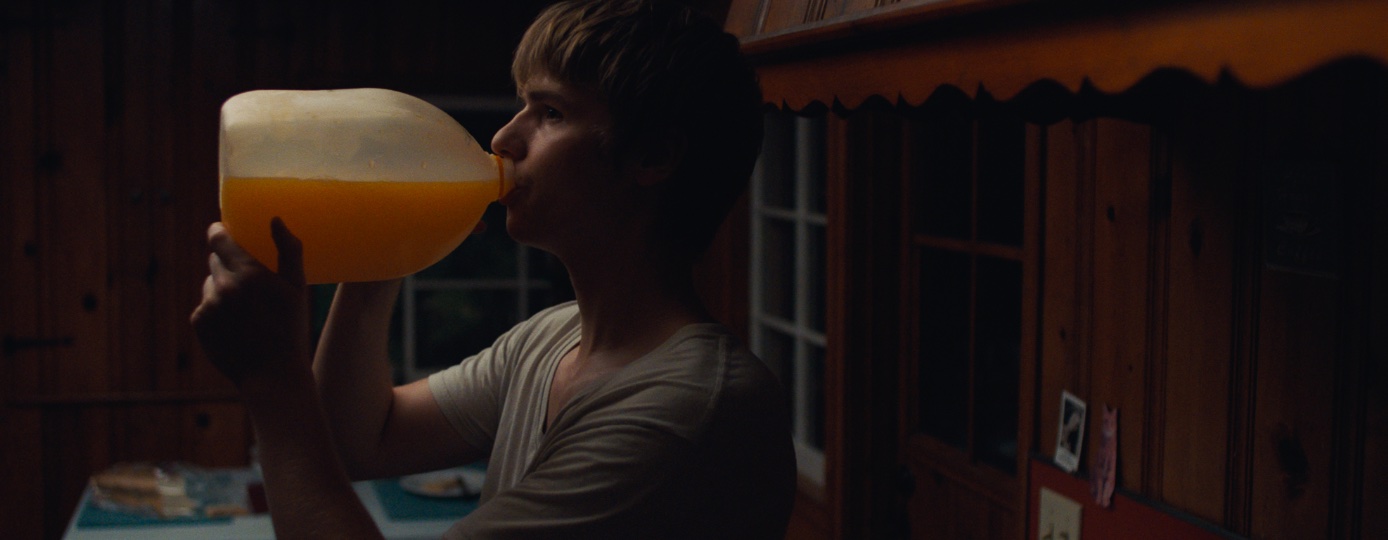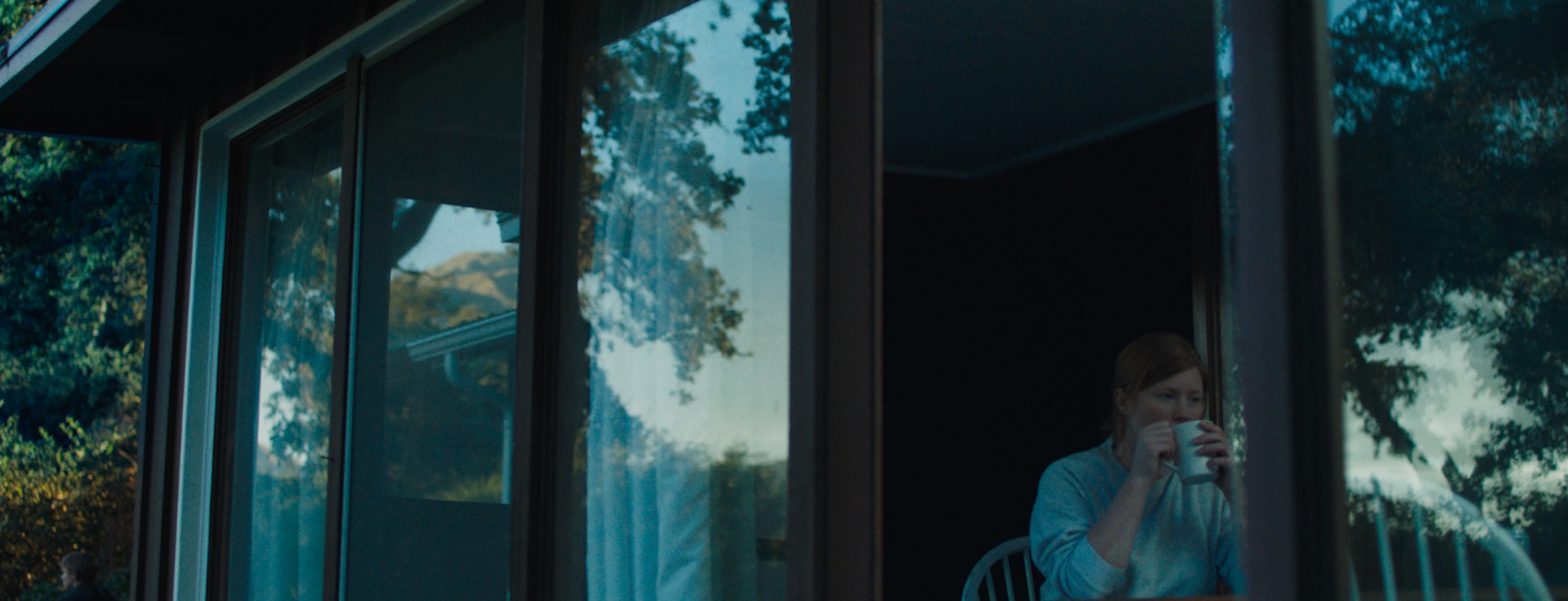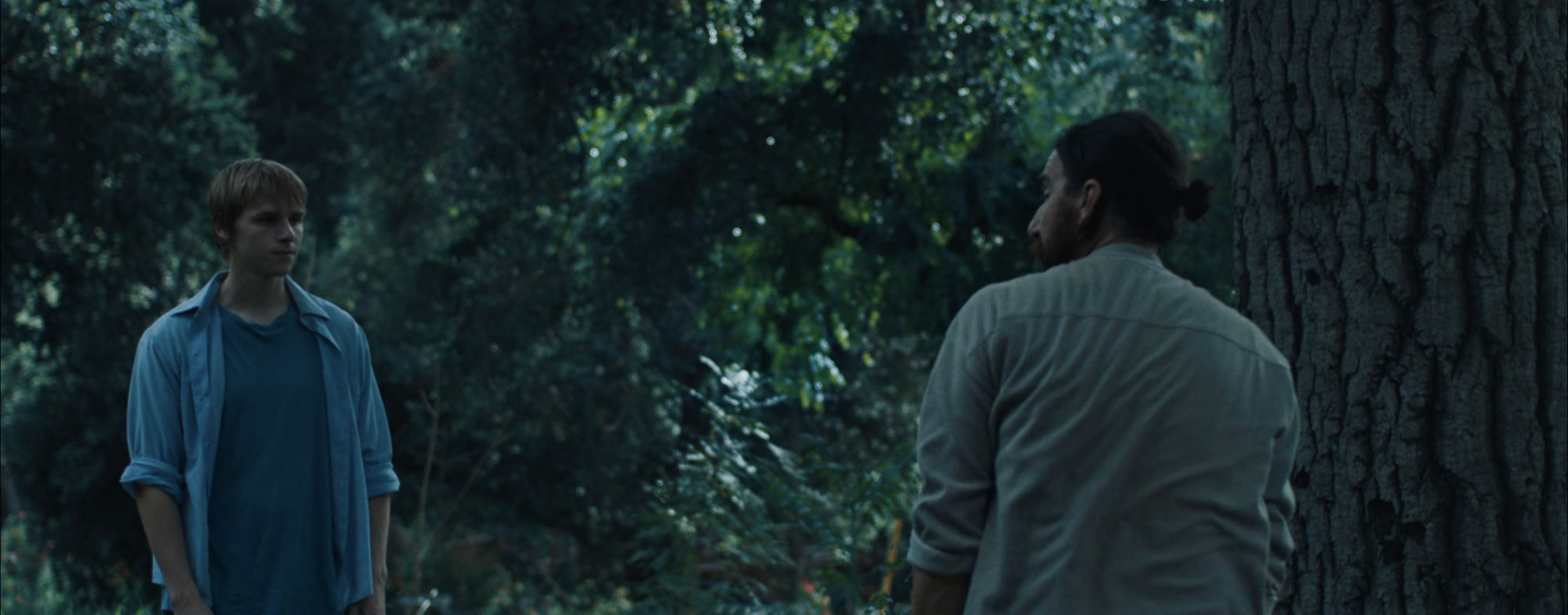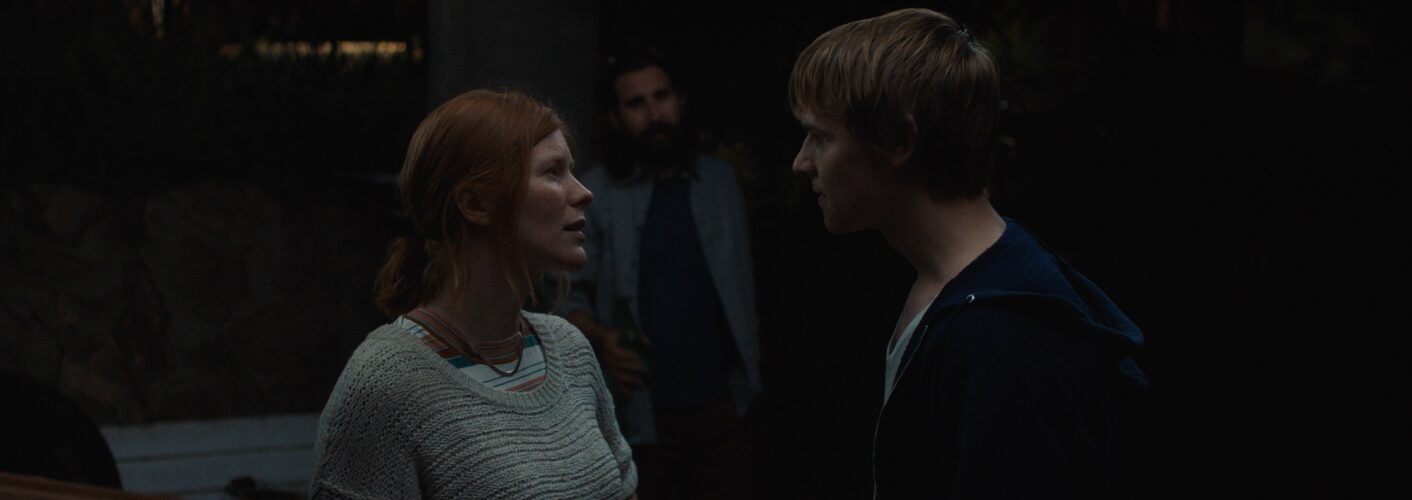
The first film that came to my mind when watching Zander Coté’s thriller Tantrums was Trey Edward Schult’s Krisha. Both films take a deep dive into a disturbed character’s psychosis, seeing how they interact with those around them in conjunction with their own isolated personal behaviours. Coté’s Francis definitely channels energy closer to that of Norman Bates than Schult’s maligned Krisha but the same explorative energy and overall sense of unease remain at play. DN is delighted to premiere Tantrums online today alongside a deep dive with Coté on the development of his character-piece, his decision to cast actors out of type, and the artistic motivations behind his long, brooding shots.
What led you to create a story centred around this kind of character and his familial interactions?
I was interested in creating a tense story about an unstable character, and it needed to take place in one location with as few people as possible, basically.
With such a character-led short, casting your actors must’ve been integral, what were you looking for each of your performers to bring and what drew you to the actors you chose?
Oddly, the only role I really cast in my mind ahead of time was Sam, the boyfriend/stepdad. I’m a big fan of Kris Avedisian, who wrote, directed and starred in the incredible Donald Cried. In that movie, he plays a big, broad, weird, funny character. But he brings an extraordinary humanity to it, and I’ve been fixated on putting him in dramatic roles ever since I saw it. I did some sleuthing and figured out a way to get the script to him, and…. gasp… it worked out! Which never happens. So, I lucked out there pretty early on in the process.
His performance is absolutely bone-chilling.
Then, we did a casting call for Francis and his mom, and it was honestly the most stressful part of the process. Casting your lead actor from open auditions is terrifying. I want to be graceful and grateful toward everyone who came to read for the parts, but that said, the reality is that it’s a crapshoot. Graham, who plays Francis, was obviously an excellent actor. He took direction amicably and accurately very very quickly, noticeably so. But he’s got this sort of gentle, goofy, almost Bill and Ted vibe in real life that I hadn’t imagined for the part at all. I thought, more predictably, that Francis should sort of, I don’t know, look creepy.
At the time, the decision was harder than it needed to be for made-up reasons. I knew Graham was the guy but I had to get myself to catch up to that reality. And then, it turns out in the end, his performance is absolutely bone-chilling. I think that’s in part because he doesn’t really fit the type, physically. Clearly, anyone who’s only seen him in this short will disagree, but that’s kind of the point I’m trying to make if that makes sense. It’s not about how he looks, it’s about how he behaves.

I can totally see that. It’s how he acts in this strange remote location with these people that gives the film that unsettling context. How did you find shooting and creating the film’s darkened visuals?
I got put in touch with Jake Bianco, a cinematographer who is as kind and hardworking and committed and funny as he is, simply put, virtuosically talented. I met him maybe a couple months before the shoot date, and we were able to get together a few times to go over everything and hone a plan. He was all-in in a way that was bolstering for me, and in turn, helped me stay confident in what I was doing.
I had this idea that I wanted to do everything in long, static takes as much as we could. I didn’t want to be a mannerist about it, but it was a creative constraint I wanted to work within. I’m really not sure what Jake thought of the nonsense I was spewing at the time, but I think he was excited that I had no interest in shooting coverage. It meant he would have more time to spend on the shots we did do.
How did you decide on the location you ended up using and how did that inform the construction of those long takes?
Finding a location was really hard because our budget constraints meant that we couldn’t really afford anything that a location scout would get us. And that’s if we could afford a location scout, which we could not. It’s the double-edged sword of shooting in and around Los Angeles. You can find a ton of resources, but everything is expensive. A random, uninteresting apartment in Hollywood might be listed on every location website and cost you a few thousand dollars a day. Anyway, basically, we got lucky and found this house about 30 minutes north of downtown LA, in Tujunga Canyon, that looked like it could be in Kentucky or West Virginia as easily as Southern California. Really rural, feeling. And sort of out of time too. Could be today, could be thirty years ago.

Once we had the location, we were able to do two things that were really, really helpful. Jake and I went there a week or two before the shoot and actually framed out shots that we then turned into storyboards, so we all knew, almost, exactly what all our frames were going to be, and what lenses to use, everything, ahead of time. We only had two days to shoot 13 pages, but we were able to get a half-day of rehearsals with the actors and department heads so we could start blocking those long takes, make some edits to the dialogue, and foresee where there were going to be issues during the shoot. That rehearsal was make-or-break.
And how did you find the execution? More challenging, or easier because of your prep?
When we actually shot it, everything was pretty smooth. The thing about the long takes is that you’re sort of editing the film in-camera in a way. So you have to really be open to changing things that don’t work in the moment, and you really have to listen to your instinct. Every take started out in a pretty stodgy, plodding way, and it was scary. But through iteration, we’d just make sure there was always something happening within the frame to keep the energy moving even though we weren’t cutting or moving the camera. The result is that there’s a lot of choreography that I’m not sure totally gets noticed. Which is a good thing; that’s the intention. What was very cool to notice was how by the second scene we shot, the energy on set was totally different even in the initial few bad takes because I think everyone had faith that we were going to get there. That’s a good feeling to have, to sense that you’re converting the nonbelievers.
The thing about the long takes is that you’re sort of editing the film in-camera in a way. So you have to really be open to changing things that don’t work in the moment.
How many shots in the film are there in total?
I can’t remember exactly but the short is like nine minutes long and there are fewer than 20 shots in it. I like to think it doesn’t feel as slow as you’d imagine if you knew going into it that we were going to be holding frames for minutes at a time.

Did that make for an easier editing process?
The edit was interesting because it seemed so easy at first, but getting the details right took some time. Rex Lowry was really great to work with because he was just so patient with me, and I’m definitely the kind of person who was telling him to cut out of a certain shot three frames sooner, and all that kind of bullshit that doesn’t matter to anyone but me, and he was always super gracious. There are a couple scenes where we are actually using mattes over parts of the frame to re-time stuff that someone is doing in one part of the shot while the other actor in another part of the shot stays the same. That was all him. Those little details really allow the piece to feel like it has a rhythm, like it breathes kind of.
Jake has a colourist he works with who helped us out, and that was more or less the final piece of it all. I wanted everything to feel sort of blue and wet and soft and all these other descriptors that don’t actually mean much, but between the two of those guys, and with the help of very specific colour grade references, we got the screen to look like what was in my head. I also have my friend Kenneth Brown, who is a VFX force of nature, and he very generously helped with a couple shots that you’d never guess even needed VFX work.
How long did everything take from script to the finalised film?
From writing to picture-lock, it probably took about six months. I can’t stress this enough: everything that’s good about this short happened because people showed up and gave their time, their expertise, their physical labor to the project. That was very special for me.
Do you have any films or new projects lined up at the moment?
I just finished writing a feature script for… a romantic comedy. Well, my take on that genre at least. By the end of it, there’s not too much romance left. But it’s funny! I think.


